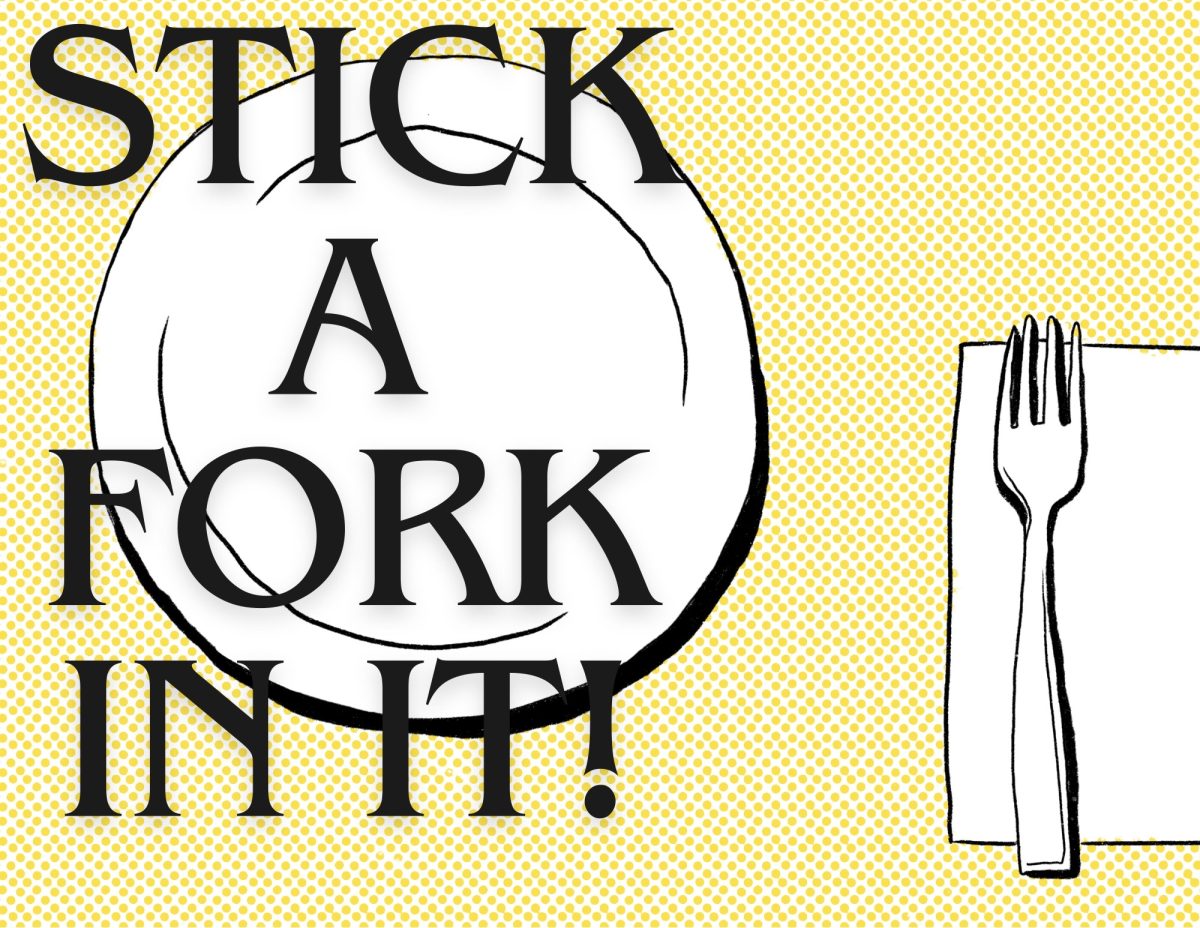Welcome to the fifth edition of Stick a Fork In It, the series where we explore the foods that La Salle loves. Each week’s new piece features a different dish volunteered by La Salle’s students and staff. This week’s dish is pizzelle, an Italian donut volunteered by religious studies teacher Mr. Noah Banks.
If someone were to Google pizzelle, they would find the traditional Italian wafer cookie, famous for being the oldest known cookie in the world. The pizzelle made every Christmas by Mr. Banks and his family, however, is a hand-made, home-fried doughnut that originated in his family’s ancestral town of Ceprano, Italy.
When he first heard of the more commonly known wafer cookie version of pizzelle, Mr. Banks assumed that his family was the one who had messed up the name — that it had gotten mixed up or lost in translation somewhere in the generations his family had been making it. This past summer, however, he was visiting Ceprano and described the dish to the locals as a handmade donut, asking for its name, and they told him it was called pizzelle.
“I thought that was kind of interesting that regionally, or locally, to my ancestors’ hometown, that’s what this is called, even though in other parts of Italy, they call it a whole different thing,” Mr. Banks said.
Mr. Banks describes his grandmother as a very neat and tidy person, so his theory is that she developed different ways of making pizzelle in their family in order to avoid the mess that would normally come with a dish like this.
Mr. Banks’ father has a history of slipping strange, mysterious ingredients into the pizzelle dough behind his grandmother’s back. “A famous one is that he took a piece of licorice and mixed it into the dough, and nobody ever found it,” Mr. Banks said. “So I don’t really know if somebody picked it out or something, but he would just take strange ingredients and add them to the dough while she wasn’t looking.”
The donuts themselves aren’t that sweet, but they are normally dipped into something sweet like sugar. The donuts are fried in oil, so the sugar sticks to the surface of the donuts. Naturally, this process would get rather messy — that’s why each member of Mr. Banks’ family gets their own bowl of sugar to dip their pizzelle into.
Mr. Banks has a very large family — about 20 people — so when they make pizzelle, they have to make very large batches of about 100. When they want another pizzelle, they must head to the kitchen to fetch one from the laundry hamper. “When she fries them, she puts them into a laundry hamper that has been lined with paper bags, because it was the biggest container that she could line with paper,” Mr. Banks said.
In the last seven or eight years, however, Mr. Banks and his cousins have begun to take on their grandmother’s mantle as head chefs each Christmas. When asked what his favorite part of making pizzelle is, he said, “I think it’s a source of nostalgia for most of my family members, so there is some anticipation of eating it, some anticipation of when [the pizelles] are going to be ready and things like that,” Mr. Banks said. “So I really appreciate feeling like other people are, you know, really looking forward to it, so being the source of that good memory for people.”
Before his first time assisting with pizzelle in the kitchen, Mr. Banks prepared for a full year. His new year’s resolution was to bake bread at least once a week as practice, so that when Christmastime rolled around, he was ready to help out.
Carrying on into future generations, Mr. Banks has begun to adopt his own tricks and techniques in making pizzelle that deviate from his grandmother’s method. “[My grandma would] have this big bowl of dough — imagine a huge salad mixing bowl — enormous bowl of dough, and she would, you know, punch it down after it had risen, and then she’d grab bits and form them into the doughnuts… and set them around the rim of the bowl, and she would just turn around and grab the next one to put into the oil to fry,” Mr. Banks said. “And so I’ve adapted that a little bit, and I now get out a baking sheet, line it with parchment paper, shape them and put them on there, and let them rise for longer.”
Mr. Banks and his family only make pizzelle on Christmas Eve, which is another reason why the dish is so important to him. Because they have it just once a year, it has become a special treat as well as a fun activity and an opportunity for family bonding time, according to Mr. Banks.
“And everybody likes a sweet treat from time to time, and at the holidays, I feel like it’s one of those times where there are lots of occasions to eat rich, enjoyable foods,” Mr. Banks said.
There is only one time that Mr. Banks can remember when his family made pizzelle outside of Christmas. A family member had been studying abroad, and when they came home for the summer holiday, his family made pizzelle so that the family member, who was not home for Christmas, could still experience their family tradition.
A search to find the Banks family’s version of pizzelle in a supermarket or restaurant is not likely to yield any results for two reasons. One: outside of Ceprano, as far as Mr. Banks is aware, the name “pizzelle” is reserved solely for the more well-known, thin wafer cookies. And two: according to Mr. Banks, many Italian dishes are seasonal, as in they are only made on one day a year or during a specific period of time.
“You make a food only on one certain holiday, like Saint’s Day or something like that,” Mr. Banks said. “And this is true of many other world cultures as well, but even if I was in Ceprano, I think it’d be hard to find this apart from Christmas Eve. I’ve never found it anywhere other than my grandma’s house.”
Pizelle is a tough dish to rate for him because it’s so “wrapped up in nostalgia,” Mr. Banks said. While the donuts are objectively delicious, they carry a lot of emotional and cultural weight for him. When he thinks of Pizzelle, aside from the dish itself, Mr. Banks thinks of family, gifts, winter weather, and the holiday season. Taking that into account, he rates it at an 8/10.
If you would like to try making pizzelle, this is the recipe that Mr. Banks and his family use to make it! Please note that this recipe is intended to make very large batches of pizzelle for Mr. Banks’ very large family — at the end of the night, there’s enough left over for everyone to take home a bag. If you don’t plan on making pizzelle for a lot of people, be sure to cut the recipe to match your desired amount of pizzelle.
—
If you would like to volunteer a dish of your own, this is the link! All I will need from you is a brief interview about your personal history with the dish and a recipe. Signups are open to students and staff alike.








